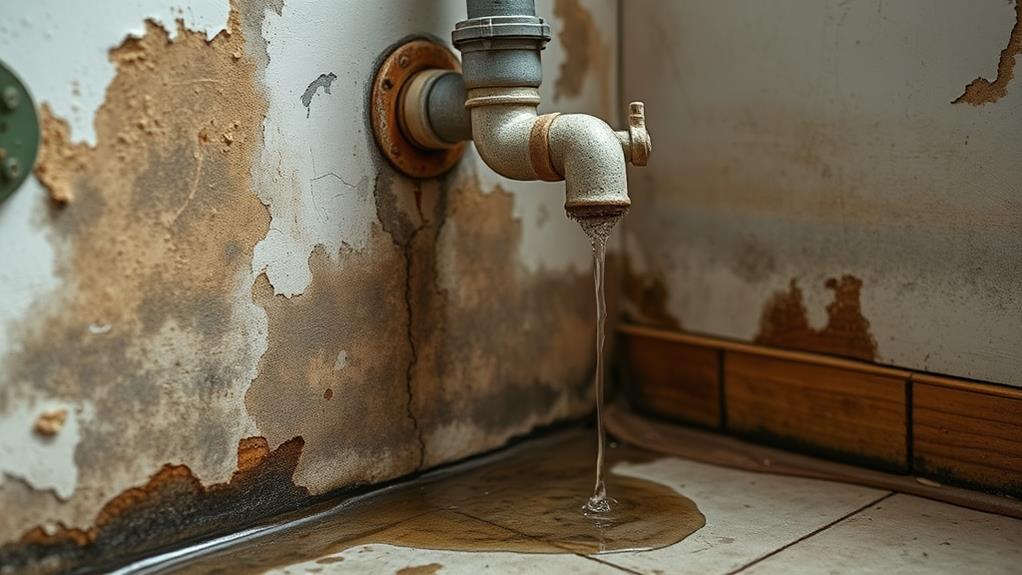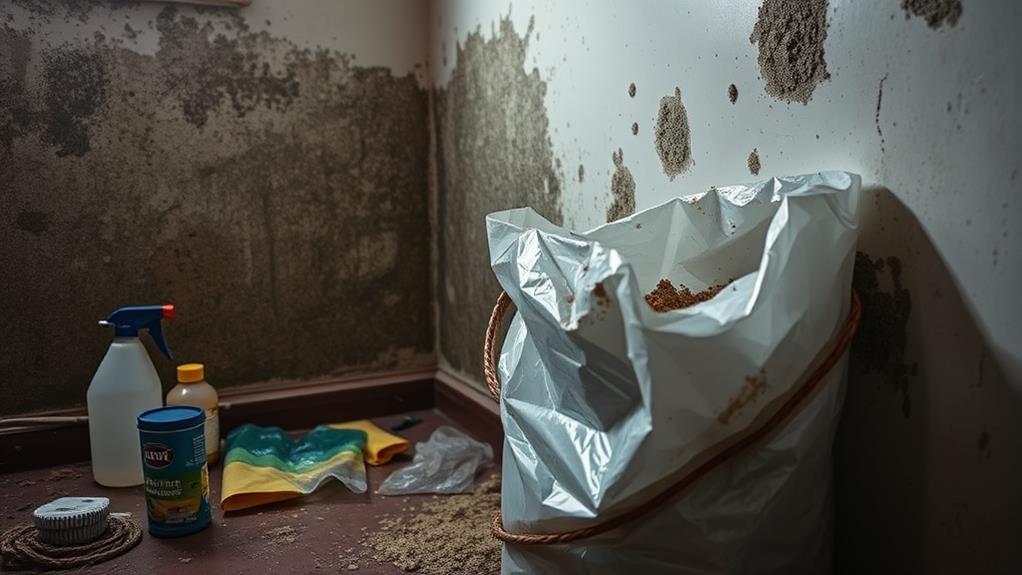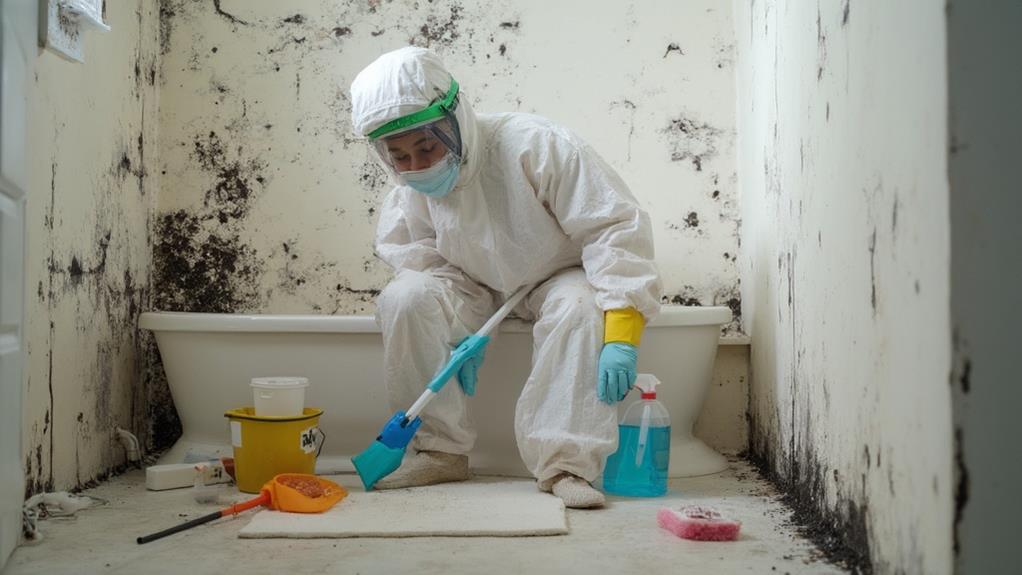Common mistakes in DIY mold remediation include neglecting proper safety equipment, using ineffective cleaning solutions, and ignoring underlying moisture issues. Many homeowners fail to wear appropriate protective gear, risking exposure to harmful spores. Household cleaners like bleach or vinegar are often insufficient for eliminating mold effectively. Addressing visible growth without fixing moisture problems can lead to recurring infestations. Improper containment of affected areas and incomplete removal and disposal of moldy materials are also frequent errors. These missteps can result in ineffective remediation and potential health risks. Understanding these common pitfalls is crucial for anyone considering tackling mold problems on their own.
Neglecting Proper Safety Equipment

One of the most critical mistakes in DIY mold remediation is neglecting proper safety equipment. Mold spores can be harmful when inhaled or in contact with skin and eyes, making protective gear essential. At minimum, wear an N95 respirator mask to prevent inhalation of spores and mycotoxins. Disposable gloves and protective eyewear are crucial to avoid skin and eye irritation.
For larger remediation projects, consider using a full-face respirator with P100 filters for enhanced protection. Disposable coveralls can prevent mold spores from clinging to clothing and spreading to other areas of your home. Rubber boots or shoe covers are also advisable to avoid tracking spores.
Proper use of safety equipment is equally important. Ensure respirators fit correctly and create a tight seal. Replace filters as recommended by the manufacturer. Remove protective gear carefully to avoid contamination, and dispose of single-use items properly. Clean reusable equipment thoroughly after each use.
Using Ineffective Cleaning Solutions
A common pitfall in DIY mold remediation is the use of ineffective cleaning solutions. Many homeowners mistakenly believe that household cleaners like bleach or vinegar are sufficient to eliminate mold. However, these products often fail to address the root cause of the problem and may even exacerbate the situation.
Bleach, while effective on non-porous surfaces, can actually promote mold growth on porous materials by providing moisture. Vinegar, though natural, lacks the potency required for severe mold infestations. Instead, professional-grade antimicrobial solutions specifically designed for mold remediation should be used.
These specialized products not only kill existing mold but also prevent future growth by leaving a protective barrier. They are formulated to penetrate porous surfaces, ensuring thorough removal of mold spores and mycelia. Additionally, many of these solutions are EPA-registered and safe for use around humans and pets when applied correctly.
It's crucial to select the appropriate cleaning solution based on the type of surface and severity of the mold problem. Using ineffective products can lead to incomplete remediation, allowing mold to return and potentially causing more extensive damage to your property.
Ignoring Underlying Moisture Issues

While addressing visible mold growth is important, ignoring the underlying moisture issues that caused the mold in the first place is a critical mistake in DIY mold remediation. Mold thrives in damp environments, and simply removing the visible growth without addressing the source of moisture will likely result in the mold returning. Common moisture sources include leaky pipes, poor ventilation, and water intrusion from the building's exterior.
To effectively remediate mold, it's essential to identify and fix these moisture problems. This may involve repairing plumbing leaks, improving ventilation in bathrooms and kitchens, or addressing issues with the building envelope. Homeowners should also consider using dehumidifiers in particularly damp areas and ensuring proper drainage around the home's foundation.
Failure to address these underlying moisture issues not only leads to recurring mold problems but can also result in more extensive structural damage over time. Water damage can weaken building materials, compromise insulation, and create an environment conducive to pest infestations. By tackling the root cause of moisture, homeowners can prevent future mold growth and protect their property from more severe damage.
Improper Containment of Affected Areas
Containment plays a crucial role in effective mold remediation, yet it is often overlooked or improperly implemented in DIY efforts. Proper containment prevents the spread of mold spores to unaffected areas during the cleanup process. Without adequate containment, homeowners risk contaminating other parts of their living space, potentially exacerbating the mold problem.
To establish effective containment, seal off the affected area using plastic sheeting and tape. Create negative air pressure within the contained space by using a HEPA air scrubber, which helps prevent mold spores from escaping. Ensure all openings, including vents, doors, and windows, are properly sealed. Wear appropriate personal protective equipment (PPE) when entering and exiting the containment area to avoid carrying spores on clothing or skin.
Common mistakes in DIY containment include using inadequate materials, failing to create a proper seal, and neglecting to maintain negative air pressure. These errors can lead to cross-contamination and ineffective remediation. Additionally, improper disposal of contaminated materials can reintroduce mold spores into the environment. By understanding the importance of containment and implementing it correctly, homeowners can significantly improve the success of their DIY mold remediation efforts.
Incomplete Removal and Disposal

When tackling DIY mold remediation, incomplete removal and improper disposal of contaminated materials pose significant risks to the success of the project and the health of occupants. Many homeowners underestimate the extent of mold growth, focusing only on visible patches while neglecting hidden infestations within walls, under flooring, or in HVAC systems. This oversight can lead to recurring mold problems and continued exposure to harmful spores.
Proper removal involves thoroughly cleaning all affected surfaces and materials, including porous items that may need to be discarded. Failing to remove all traces of mold can result in rapid regrowth, rendering the remediation efforts futile. Additionally, improper disposal of moldy materials can spread spores to unaffected areas of the home or contaminate outdoor spaces.
To ensure complete removal, it's crucial to inspect adjacent areas and use appropriate cleaning agents and techniques. Disposal should involve sealing contaminated materials in heavy-duty plastic bags before removal from the premises. Homeowners should also consider professional testing post-remediation to verify the effectiveness of their efforts and ensure a mold-free environment.
Frequently Asked Questions
How Long Does It Take for Mold to Grow After Water Damage?
Mold can start growing within 24 to 48 hours after water damage occurs, given the right conditions. The growth rate depends on factors such as temperature, humidity, and available nutrients. Prompt water removal and drying are crucial to prevent mold growth.
Can I Paint Over Mold to Hide It?
You might be tempted, but wait! Painting over mold is a risky move. It won't solve the underlying problem and could exacerbate health risks. Instead, proper removal and addressing the root cause are crucial for effective mold remediation.
Are All Types of Mold Harmful to Human Health?
Not all types of mold are equally harmful to human health. While some molds can cause allergic reactions or respiratory issues, others may produce toxic compounds. The health impact varies based on the mold species and individual sensitivity.
How Often Should I Inspect My Home for Mold?
Regular home mold inspections are crucial for prevention. Conduct visual checks monthly, focusing on high-moisture areas. Perform thorough inspections quarterly or bi-annually, and after water-related incidents. Professional assessments are recommended annually, especially in humid climates or older homes.
Can Air Purifiers Effectively Remove Mold Spores From Indoor Air?
While air purifiers aren't a complete solution, they can effectively reduce mold spores in indoor air. High-quality HEPA filters capture up to 99.97% of airborne particles, including mold spores, helping to improve air quality and reduce health risks.
Conclusion
In conclusion, effective DIY mold remediation requires careful attention to safety protocols, appropriate cleaning agents, moisture control, containment procedures, and thorough removal. Overlooking these critical aspects can lead to incomplete remediation, potential health risks, and recurrence of mold growth. Homeowners who bite off more than they can chew in tackling mold issues may find themselves facing more extensive and costly problems down the line. When in doubt, consulting professional mold remediation services is advisable to ensure a comprehensive and lasting solution.

